Related Research Articles

The Iranian Students' News Agency established in December 1999, is a news agency run by Iranian university students.

The Organization of Iranian People's Fedai Guerrillas, simply known as Fadaiyan-e-Khalq was an underground Marxist–Leninist guerrilla organization in Iran.
Abdul Rahman Ghassemlou was an Iranian Kurdish politician and leader. Ghassemlou was the Secretary-General of the Democratic Party of Iranian Kurdistan (KDPI) from 1971 until his assassination in 1989 by individuals suspected of being agents of the Islamic Republic of Iran.
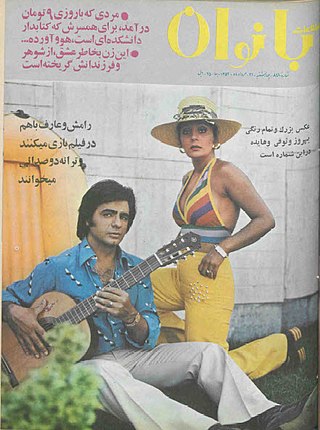
Ettelā'āt-e Bānuvān or Banovan was one of the early women's magazines published in Tehran. The magazine was established by Ettelaat Publishing Group in 1957. The first issue of the magazine which was published on a weekly basis appeared in April 1957.
BBC Persian is the Persian language broadcast station and subsidiary of BBC World Service which conveys the latest political, social, economical and sport news relevant to Iran, Afghanistan, and Tajikistan, and the world. Its headquarters are in London, United Kingdom.

National Iranian Radio and Television, or NIRT for short, was the first Iranian state broadcaster, which was established on June 19, 1971, following the merger of the country's radio and television services. It operated up until the Iranian Revolution in 1979, after which NIRT became the Islamic Republic of Iran Broadcasting (IRIB).
Front for the Liberation of Iran (FIL), Iran Liberation Front (ILF) or the Saviour Front was an Iranian monarchist organization based in Paris, which sought to restore the Pahlavi dynasty following the Iranian Revolution. It was led by Ali Amini, former Prime Minister of Iran, who announced establishment of the group on 19 January 1982.
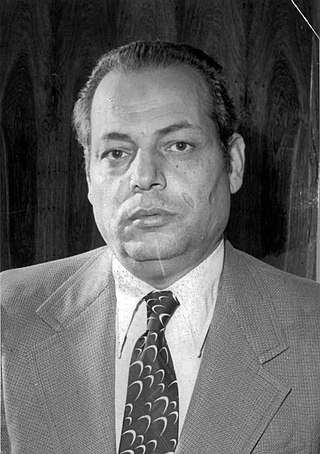
Ali Akbar Moinfar was an Iranian politician and the first oil minister of the Islamic Republic of Iran, serving briefly from 1979 to 1980. He later served as a member of the Parliament of Iran from 1980 to 1984, representing Tehran, Rey and Shemiranat.

Hasan Nazih (1921–2012) was an Iranian civil rights lawyer and politician. Following the Islamic revolution in Iran he briefly served as the head of the National Iranian Oil Company (NIOC) between February and September 1979.

Azadeh Shafiq was an Iranian royal and a member of the Pahlavi dynasty, being daughter of Ashraf Pahlavi. Following the Iranian revolution that toppled her uncle, Mohammad Reza Pahlavi, she exiled in Paris and involved in opposition activities to the Islamic regime in Iran.
Salam was a Persian newspaper published in Tehran, Iran. The name of the paper was given by Ahmad Khomeini, Ayatollah Khomeini's son. It was highly influential in the country during its brief existence from 1991 to 1999 and was one of the early reformist dailies published following the Islamic revolution in Iran.
Television was first introduced to Iran in 1958, as a privately-owned and commercially-operated enterprise, before being nationalised, remaining a state-controlled monopoly, first of National Iranian Radio and Television, and following the Iranian Revolution in 1979, of Islamic Republic of Iran Broadcasting.
Annabelle Sreberny was a writer, scholar, and professor of Global Media and Communication and Director of the Centre for Media and Film Studies at SOAS. Her writing covers globalization, communication, and culture with specific foci on international news and Iran.
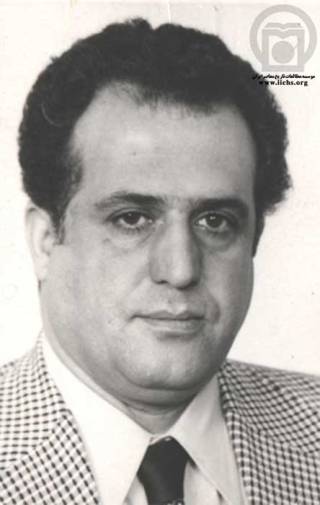
Mahmoud Jafarian was an Iranian politician under the last Shah of Iran, Mohammad Reza Pahlavi. He served simultaneously as deputy director for National Iranian Radio and Television (NIRT), managing director of Pars News Agency, and Vice President of the Rastakhiz Party.
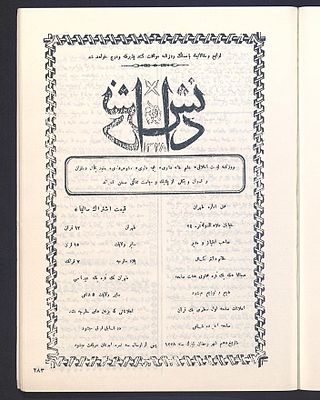
Danesh was a Persian women's journal which was edited in Tehran. It was published weekly from 1910 until 1911 in 30 issues.
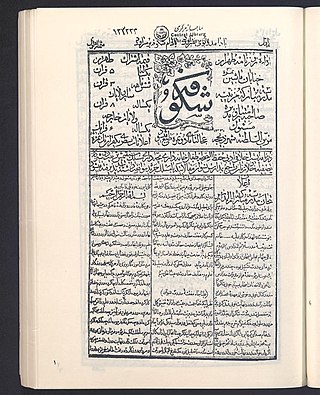
After the publication of the first Persian women’s magazine Danesh in Tehran in 1910–1911, Shokufeh, the next Persian magazine only for women, was established in 1913. The magazine was headquartered in Tehran and published on a biweekly basis. The editor was Maryam Amid Mozayen ol-Saltaneh, the daughter of Aqa Mirza Sayyed Razi Ra’is al-Atebba, a high-ranking medical advisor at the Qajar court. Almost at the same time, Mozayen ol-Saltaneh founded the Iranian Women’s Society Anjoman Khavatin Irani, which objectives she published in the Shokufeh magazine. She supported particularly the promotion of Iranian products and industry as well as education, science and art among women.

Cinema of Ghana also known as the Ghana Film Industry nicknamed Ghallywood, began when early film making was first introduced to the British colony of Gold Coast in 1923. At the time only affluent people could see the films, especially the colonial master of Gold Coast. In the 1950s, film making in Ghana began to increase. Cinemas were the primary venue for watching films until home video became more popular. The movie industry has no official name as yet since consultations and engagements with stakeholders has been ongoing when a petition was sent to the Ministry of Tourism, Arts and Culture which suspended the use of the name Black Star Films.

Rahmatollah Moghaddam Maraghei was an Iranian politician. A co-founder of the Iranian Writers' Association (IWA), he briefly served as a member of the parliament in the early 1960s, but was ousted for criticizing the Shah.
Gholam Khiabany is an Iranian-British media scholar and Reader in Media and Communications at Goldsmiths, University of London. He is known for his works on media in the Middle East and the relationship between media and religion.
Nameh-e Banuvan was a women's magazine published between 1920 and 1921. It was one of the publications that were started following Reza Shah's establishment his rule in Iran. Its founder was Shahnaz Azad who was also the publisher. The magazine was based in Tehran. The magazine was published biweekly and stated its aim as to encourage the emancipation of the Iranian women. It also attempted to remind male audience that women were their primary teachers.
References
- ↑ Quandt, William B. (2009-01-28). "Small Media, Big Revolution: Communication, Culture, and the Iranian Revolution". Foreign Affairs. ISSN 0015-7120 . Retrieved 2019-11-02.
- ↑ Bokharai, Firoozeh Radjai (1996). "Small Media, Big Revolution: Communication, Culture, and the Iranian Revolution". Canadian Journal of Communication. 21 (2). doi: 10.22230/cjc.1996v21n2a950 . ISSN 1499-6642.
- ↑ Shaheen, Jack G. "Small Media, Big Revolution: Communication Culture and the Iranian Revolution". Middle East Policy Council. Retrieved 2019-11-02.